
Richard Gunion/iStock/Getty Images
Poblano peppers are common to Mexican cuisine, in which they are served roasted or stuffed, and are a key ingredient for chili rellenos. Poblano peppers can be found in many grocery stores as well as in Latin American groceries. Fairly large and heart-shaped, poblano peppers are mild-tasting. In their dried form, they are known as ancho chilis. Cooked poblano peppers are rich in a number of nutrients and are a source of dietary fiber.
Nutrition Basics
A single cooked poblano pepper has only 13 calories per serving and less than 1/4 gram of fat. A single pepper also has 0.55 gram of protein and almost 3 grams of carbohydrate per serving. Poblano peppers are rarely eaten on their own, however. Because they hold up well to cooking, poblano peppers are often stuffed with other ingredients, such as rice and cheese. To keep the peppers low in fat and healthy, choose low-fat, low-calorie stuffings, such as other vegetables, or substitute whole grains for refined grains. For instance, use brown rice instead of white rice to make a rice stuffing.
Dietary Fiber Content
A single cooked poblano pepper has 4 percent of the daily value of dietary fiber for those on a 2,000-calorie-per-day diet. This is 1.1 grams of dietary fiber. Because most Americans do not include enough dietary fiber in their diet, the relatively high fiber content of poblano peppers is a plus. Dietary fiber helps you feel fuller faster, reducing the chance of overeating. It also helps food pass through your digestive system more easily, reducing the risk of constipation. The dietary reference intake is between 21 and 38 grams of dietary fiber per day for adults.
Iron-Rich Food
One ancho pepper -- a dried poblano pepper -- has 1.9 milligrams of iron per serving. This provides almost 24 percent of the recommended dietary intake of iron for adult men of all ages and women 51 and older. It has 11 percent of the RDI for adult women under age 51. As an essential mineral, iron helps produce blood cells, as well as the proteins hemoglobin and myoglobin, which carry oxygen in your bloodstream. To increase the iron content of your poblano pepper, you can stuff it with other iron-rich foods, such as spinach or ground beef.
High in Vitamin A
A single ancho pepper has 174 micrograms of vitamin A, a fat-soluble vitamin that is important for healthy vision. This provides, respectively, 19 percent and 25 percent of the recommended dietary intake for adult men and women. It also provides, respectively, 23 percent and 13.4 percent of the DRI of vitamin A for pregnant and breast-feeding women. In addition to helping with vision, vitamin A is an antioxidant, protecting your body from damage from free radicals, which are produced during the digestive process. Free radicals may cause premature aging and may increase the risk of heart disease and cancer.
Related Articles

How Many Calories Do Taco Bell Flour ...

How to make Stuffed Jalapeno Peppers ...

How to Cook Pimentos

Most Flavorful Hot Peppers

How to Clean Jalapeños

How Many Calories Are in a Stuffed Bell ...
How Many Calories Are in Roasted Red ...
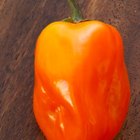
How to Grind Habanero Peppers
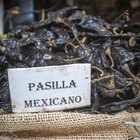
How to Cook a Pasilla Chili
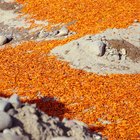
Peruvian Cooking Spices

How to Get Skins Off Peppers

Does Cooking a Habanero Pepper Make It ...
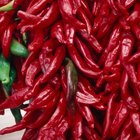
Chinese Hot Pepper Types

What Are the Health Benefits of ...

How to Neutralize Food Seasoned With ...

How to Prepare Hungarian Wax Peppers

How to Roast Green Peppers

Does Fire Roasting a Jalapeno Make It ...

Substitutes for Scotch Bonnet
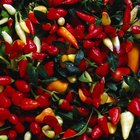
How to Freeze Cherry Peppers
References
- Livestrong The Daily Plate: Poblano Pepper (Cooked)
- Woman's Day: 8 Peppy Recipes for Poblano Pepper
- Chili Pepper Madness: Poblano Chili Peppers
- U.S. Department of Agriculture National Nutrient Database: Peppers, Ancho, Dried
- MedlinePlus: Iron in Diet
- University of Maryland Medical Center: Vitamin A (Retinol)
- MedlinePlus: Antioxidants
Writer Bio
Jessica Hendricks has worked as a professional journalist for CBS and ABC News in the areas of health, fitness and nutrition. Passionate about wine, she has also worked for several food and drink publications. She holds three master's degrees in Eastern European culture, journalism and nutrition and dietetics.
Photo Credits
Richard Gunion/iStock/Getty Images